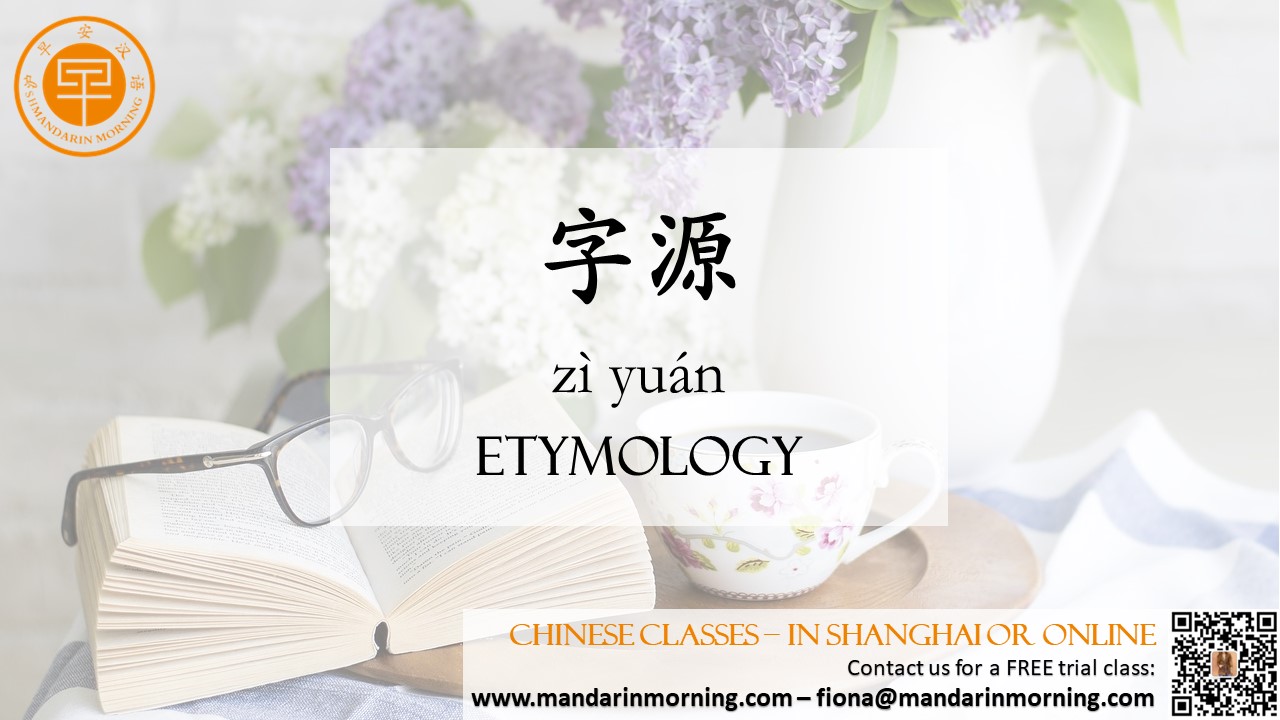【Learn Chinese】Chinese Etymology: A brief history |
| Etymology is the study of the origins and original meanings of words. Sometimes this involves investigating a particular word’s foreign ancestry, but it might also mean examining the previous incarnations of the word as it was recorded in ancient literature. At other times, it refers to tracking the changes in how a word was and is pronounced. In Chinese, the word for etymology (字源 zìyuán or 词源 cíyuán) also clearly betrays its meaning. The character 字 or 词 means “word” and the character 源 means “source” or “origin.”  A brief history of Chinese etymology Despite the existence of certain limitations due to the fact that Chinese is not a phonetic language, Chinese scholarly interest in the etymological roots of words is a venerable tradition. Already in the era of the Eastern Han dynasty (25–220 CE), the renowned Xu Shen penned a masterful etymological treatise called Shuowen Jiezi (说文解字 Shuōwén Jiězì). This text, with a title that quite literally means "discussing writing and explaining characters,” has stood the test of time and is still considered an indispensable part of any literate Chinese person’s reading list. Containing the definitions for more than 9,000 characters, Xu Shen’s work represents one of the first systematic attempts to examine Chinese characters on an etymological basis, prioritizing their origins and first appearances. For Xu Shen and the Confucian scholars that inhabited his academic milieu, these etymological adventures were not just some academic wild goose chases motivated by idle curiosity. On the contrary, they were part and parcel of statecraft and even an expression of religious devotion. This intensity was due to the fact that much of the Confucian philosophy of the time was guided by a belief in the “Rectification of Names” or Zhèngmíng (正名). The word 正名 pairs the character for correct/proper/right (正) with the word for name (名). Cosmic order was premised on the idea that everything and everyone had their ordained role to play. If people or objects were given the wrong names, chaos might ensue! This hope for “rectification” reflected a faith in the vital importance of assigning the true names to people, things, relationships, and ideas. If properly executed, it was believed that the “Rectification of Names” would result in utopian social harmony. With people, places, duties, and relationships rightly named and accurately defined, the smooth functioning of the state and cosmic equilibrium was a cheerful inevitability. With this Confucian commitment to “Rectification” in mind, it becomes easier to see why an emphasis on etymology was an important part of traditional Chinese scholarship. Water (水): An experiment in Chinese etymology The Chinese character meaning water, 水 (shuǐ), is an excellent example of the etymological journey of many modern Chinese characters. This character is a pictographic character (象形字 xiàngxíngzì), meaning that the character looks like the object it represents. To understand the etymology of this character, it is possible to track its development from its origins as an oracle bone character all the way to the present day. In the original attempt to depict water, the creator of the character 水 (shuǐ) was presented with a challenge: how to create an image for water that would be widely understood in his or her culture and context? Well, where is water to be found? In the river. Thus, the original character for water resembled a picture of a flowing river. Over time, as written Chinese meandered along the ways and byways of the Middle Kingdom’s 5,000-plus years of history, the original visual inspiration which inspired ancient Chinese people to use a picture of a river to represent water was diluted and abstracted. In modern times, the character bears only limited resemblance to its original form. As an educational tool, knowing the story of this character’s origin might very well prevent you from forgetting it in the future. |